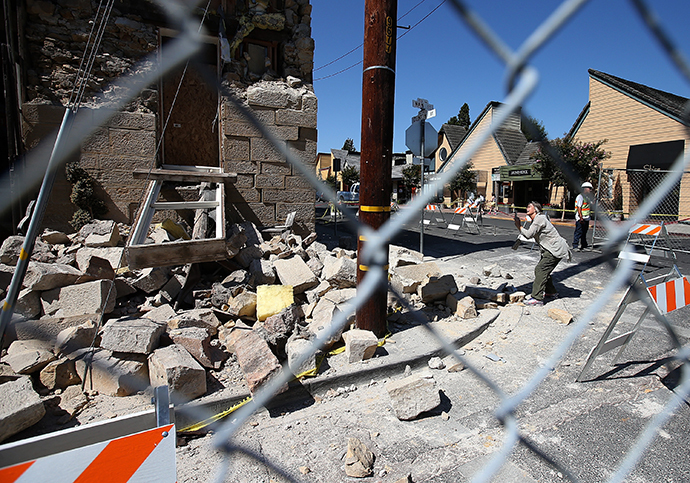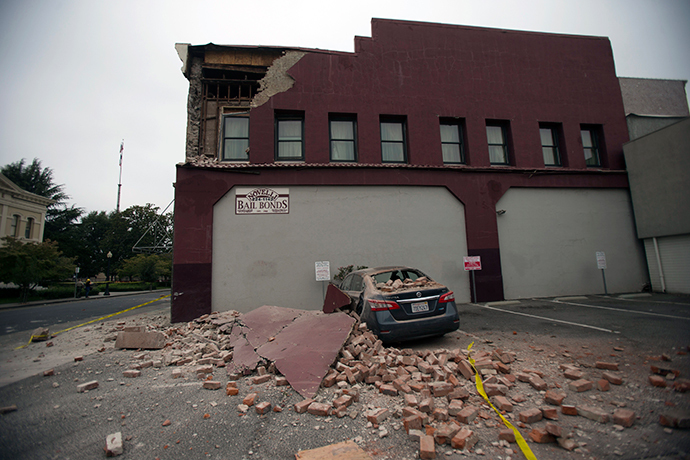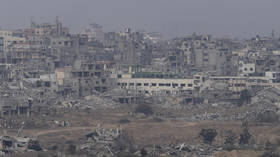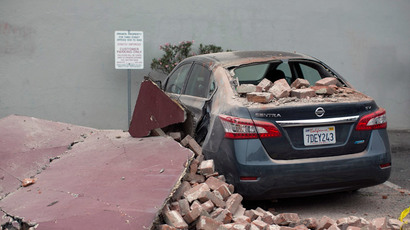North California must brace for major earthquake in near future - US Geological Survey

Four segments of the San Andreas fault system in Northern California are due for an earthquake of magnitude 6.8 or greater, including a section that runs near infrastructure crucial to water supply in much of the state, according to a geological study.
The Green Valley fault northeast of San Francisco between the cities of Napa and Fairfield is poised for a magnitude-7.1 earthquake or stronger, said researchers from the US Geological Survey and San Francisco State University responsible for the report.
The fault is located near dams and aqueducts that supply water from the Sacramento and San Joaquin rivers to the San Francisco Bay area, Southern California, and the farm-heavy Central Valley. The Green Valley fault’s last quake happened “sometime in the 1600s,” AP reported.
The northern Calaveras and Hayward faults in the eastern San Francisco Bay area, as well as the Rodgers Creek fault to the north, are the other segments with enough built-up tension for a magnitude-6.8 or higher quake, the researchers found.
The study, published Monday in the Bulletin of the Seismological Society of America, shows that California "needs to consider more seriously" the major earthquake risks in the region, James Lienkaemper, a US Geological Survey geologist and lead author of the study, told AP.

The four segments at risk are part of the San Andreas fault system, the point at which the western half of the state is moving northwest away from the rest of the United States land mass at a rate of about 2 inches per year.
In 2006, a study of the San Andreas system found that it was past due for a major earthquake, one at least magnitude 7.0, especially in the southern section of its reach. The southern region of the fault has not seen a massive quake for around 300 years, the study concluded.
"The information available suggests that the fault is ready for the next big earthquake but exactly when the triggering will happen and when the earthquake will occur we cannot tell [...] It could be tomorrow or it could be 10 years or more from now," said author Yuri Fialko, of the Institute of Geophysics and Planetary Physics of the Scripps Institution of Oceanography at the University of California San Diego.

Researchers for the report released Monday gathered data in part from regular readings of fault lines taken by geologists and San Francisco State University students beginning in 1979.
These surveys measure fault creep, or movements over time that relieve strain on faults. If there is no fault creep, this indicates that a fault is locked and strain builds until an earthquake releases it. About two-thirds of the 1,250-mile San Andreas fault system shows fault creep, the study found.
In late August, a magnitude-6.0 earthquake hit the region, in the Napa Valley. Around 100 people were injured, mostly from stumbling on broken glass and other debris after the temblor hit before dawn on Aug. 24. At the time of the quake, officials speculated that costs from the damage would reach more than $1 billion.
The quake was the region’s largest in 25 years. On Oct. 17, 1989, the magnitude-6.9 Loma Prieta quake struck the San Francisco-Oakland area, killing more than 60 people, most from a freeway collapse.














